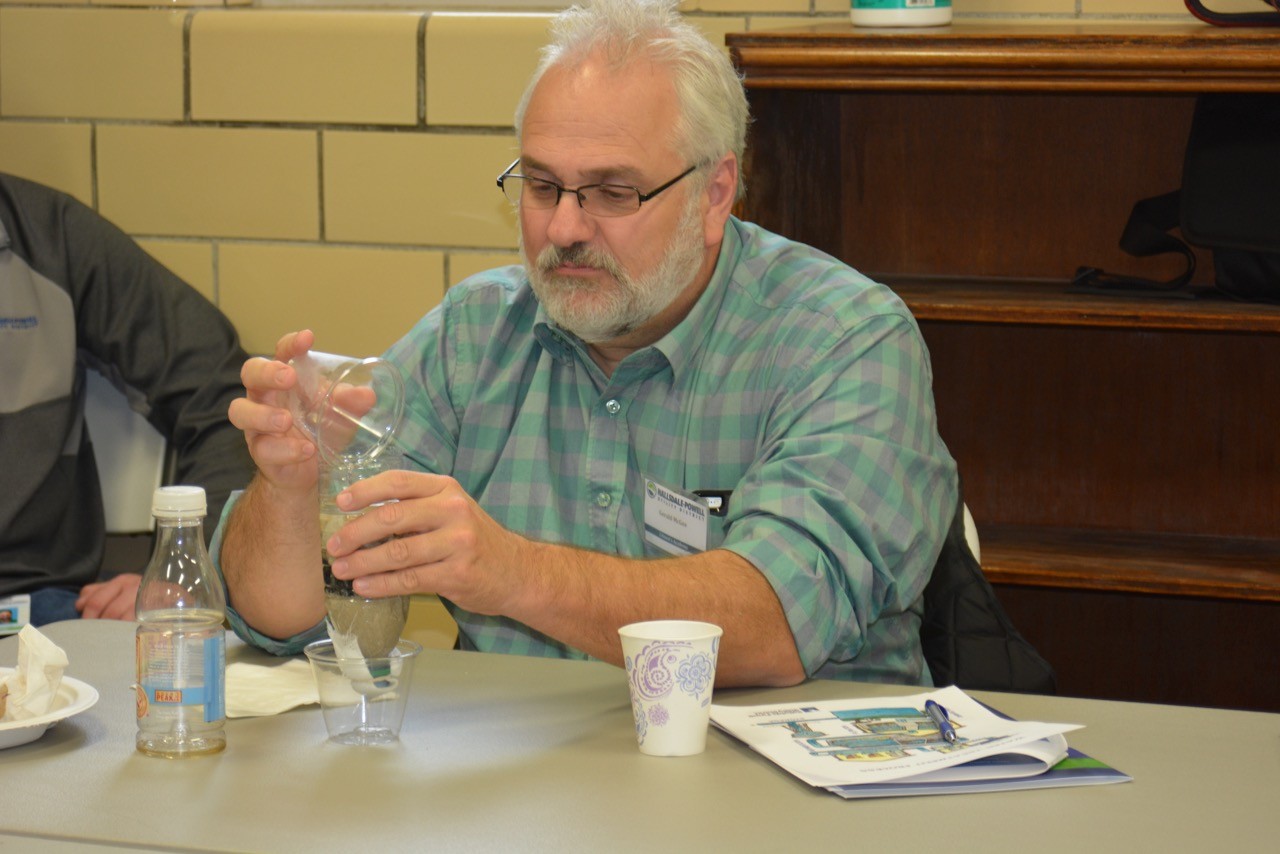It’s Economics 101, but turns out it’s also Utility Water 101, the old principle of supply and demand. Attendees of the Hallsdale Powell Utility District’s Citizens Academy ended their series of classes at Melton Hill Water Treatment Plant for a look at the drinking-water side of HPUD’s work.

Melton Hill Water Treatment Plant, built in 1965 and upgraded in 2006
Back to supply and demand, as population has grown in the district and as drinking water standards have risen, HPUD has changed where it gets water, how it delivers it to customers, and how it’s treated. The Melton Hill plant was built in 1964 with a two million gallon per day capacity and sand filter treatment. An expansion in 2006 boosted capacity to 13.4 million gallons per day and added membrane filtration technology. It feeds most of the utility district, including most of Halls and Powell. The plant has seven staffers and runs 24 hours per day.
The Norris Water Treatment Plant in Sharps Chapel added an additional four million gallons per day with room to grow and runs 10 hours per day and feeds parts of Union County and northern Halls.
Folks might remember the old spring-fed water plants: Dry Gap, Granny Bright and Fowler Springs. Those were taken offline in 2006 and 2007.

HPUD CEO Darren Cardwell demonstrates a sand filtration system in this small-scale version.
“We stretched those plants every summer to their max,” said HPUD CEO Darren Cardwell. “They had to go because capacity for customer use was going up. Summertime was a major, big ordeal.”
Cardwell added that the modern plants are constantly testing drinking water, and regulations for what is considered “safe” drinking water keep getting tighter.
“We measure stuff in parts per million, billion and trillion,” he said.
“Parts per million is one milliliter in an Olympic pool,” said plants manager Nick Jackson. “And they keep ramping that up.”
Cardwell said the utility district uses local terrain to get water to customers’ homes. Water tanks on ridgetops send water down to houses, but the method can lead to pressure issues for people building in very high or very low areas.
He also addressed the price of HPUD water. He acknowledged that the price of utility service has gone up, but HPUD water is still around one cent per gallon.
“It’s still what we feel is a very reasonable cost,” he said. “But we all know that costs are going up. We’ve been in a generational change from when it was just dirt cheap to now you’ve got to budget for it. You’ve got to compare us with more than just dollars.”

